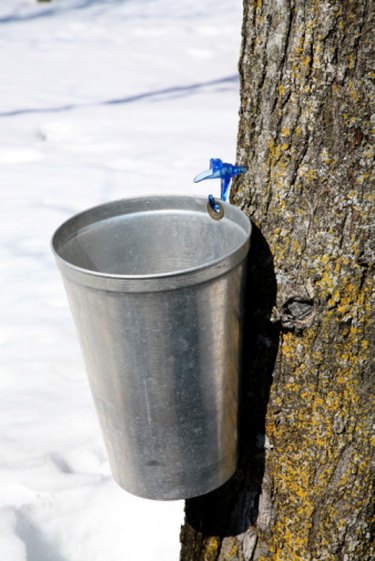
The sugar content of sap that oozes from a maple tree is much higher than that of other trees, allowing for the signature flavor of the maple. The sap of the tree is its lifeblood.
Significance
Video of the Day
Sap in a maple tree, or any tree, is comparable to human blood. It is the substance that moves water, sugars and nutrients throughout the tree. The process of utilizing a tree for its sap begins as sugar is produced in the leaves during the process of photosynthesis.
Video of the Day
Sugar Conversion
The sugar is then transported by sap into the wood of the maple where it is stored over the winter. The sweet substance converts into sucrose and dissolves into the sap. As temperatures rise above freezing in the spring, pressure increases within the tree, forcing sap to ooze from any cracks or holes.
Rhythmic Pattern
When temperatures are below freezing, the opposite effect occurs. A suction develops that pulls water into the sap and tree for replenishing. Sap moves throughout a section of the outer tree trunk called sapwood. Sap stops flowing away from the tree when night and day temperatures no longer fluctuate between freezing episodes.